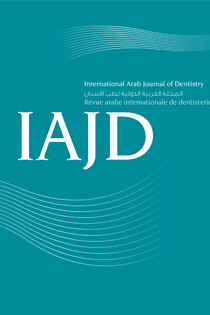Résumé
The aims of the study were 1) to evaluate the supporting bone tissue thickness around 68 upper incisors and its relationship with their inclination, and 2) to investigate the impact of gender on these two variables.
Thirty-four patients with no previous orthodontic treatment participated in the study. Cone beam computed tomography (CBCT) scans were taken. Sagittal sections of the roots were made to evaluate the supporting bone at the labial and the lingual aspects and at three different levels: cervical, middle and apical. Angles of the upper central incisors (U1/U2) with the palatal plane (SPP) were also measured.
The palatal apical region had the greatest thickness of bone tissue followed by the palatal middle and the labial apical regions. The lowest thickness was observed on the labial surface, in the apical and in the middle of the root. The thickness of the labial apical region of both upper teeth increased significantly when the angle between the upper central incisors axis and the palatal plane increased (U1: p = 0.012/ r = 0.42 and U2: p = 0.005/ r = 0.46). The thickness of the palatal middle of the root regions for both upper central incisors were significantly higher in males than females (U1: p = 0.005/ average = 1.2 mm for males; U2: p = 0.003/ average = 1.0 mm for males). There was no significant difference in the incisors’ inclination between males and females.
The bone tissue thickness in the labial apical region increased when the inclination of the upper central incisors increased. The greatest value of bone tissue amount was in the apical region, whereas the lowest value was in the labial surface in both cervical and middle of the root regions. Males had a higher value than females of bone tissue amount in the palatal middle of the root region at the upper central incisors.

